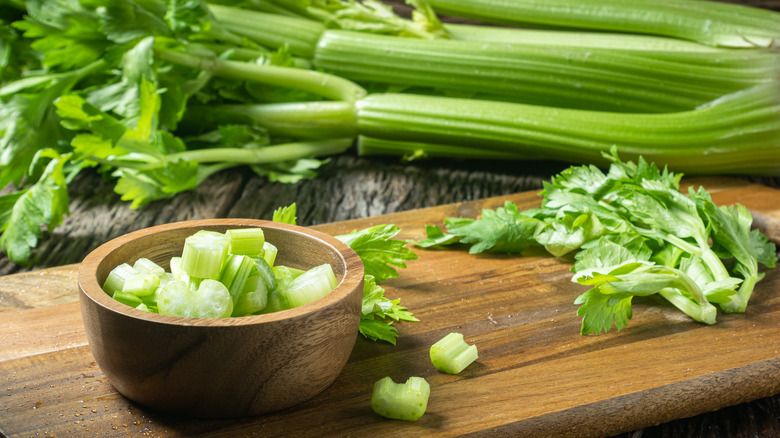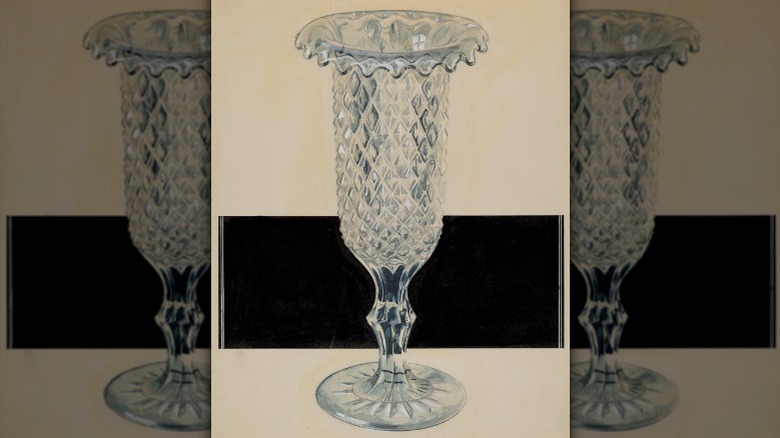In The Gilded Age, Celery Was A Luxury
If you pay attention to wellness trends, there's no doubt you've heard of celery juice. The drink gained tremendous popularity in the past few years on social media when celebrities and wellness influencers alike began touting its benefits. Anthony William, also known as the Medical Medium, claims celery juice can help with digestion, acne, acid reflux, and even Lyme disease, according to MindBodyGreen. Whether or not these claims can all be backed with scientific evidence remains to be seen, but it's true that the wellness trend brought a healthy vegetable back into the spotlight.
Before the celery juice craze, celery had a sleepy few decades in American cuisine. It's commonly eaten in ants on a log, dipped into ranch, used as Bloody Mary garnish, or diced as part of a mirepoix. Celery has its place in fancier dishes, too, like this silky cream of celery soup recipe or this shrimp macaroni salad recipe. Yet celery isn't one of America's favorite vegetables by a long shot. On YouGovAmerica's list of the 50 most popular vegetables in Q3 2022, celery came in 29th place, liked by 67% of people.
Luckily for celery, it hasn't always been this way. In fact, during the golden era of celery, it was considered to be a delicacy.
A fancy Victorian centerpiece
Let's travel back in time to the Gilded Age, when having celery in your kitchen was worth showing off. If anyone needs a refresher, the Gilded Age took place in 1870s America and was defined by corrupt politicians and materialistic citizens, according to Britannica. This era is responsible for bringing us Industrial Revolution entrepreneurs such as John D. Rockefeller and Andrew Carnegie and mega mansions like The Breakers (via History).
This was a time period during which wealth was displayed. And what better way to cement your place in the upper class than to...have celery on your dinner table? According to Taste Cooking, celery played a bit hard to get with the rich people of the Victorian era, which only made them want the vegetable more. It's true that back in the early 1800s, celery was tricky to grow and hard to come by (via Atlas Obscura). However, Epicurious actually attributes its popularity to economic, agricultural, and transportation developments in the mid-1800s that made celery more attainable to more people.
But people in the Gilded Age weren't pulverizing celery into a healthy green drink. According to Atlas Obscura, stalks were used as decorative centerpieces, with fancy glass celery vases to hold them. They were eaten too, typically with gravy, demi-glace, or mayonnaise (via Taste Cooking).
Once it became commonplace in restaurants and homes, celery began to lose its appeal. And until the celery juice trend, it hasn't returned to the spotlight since.

